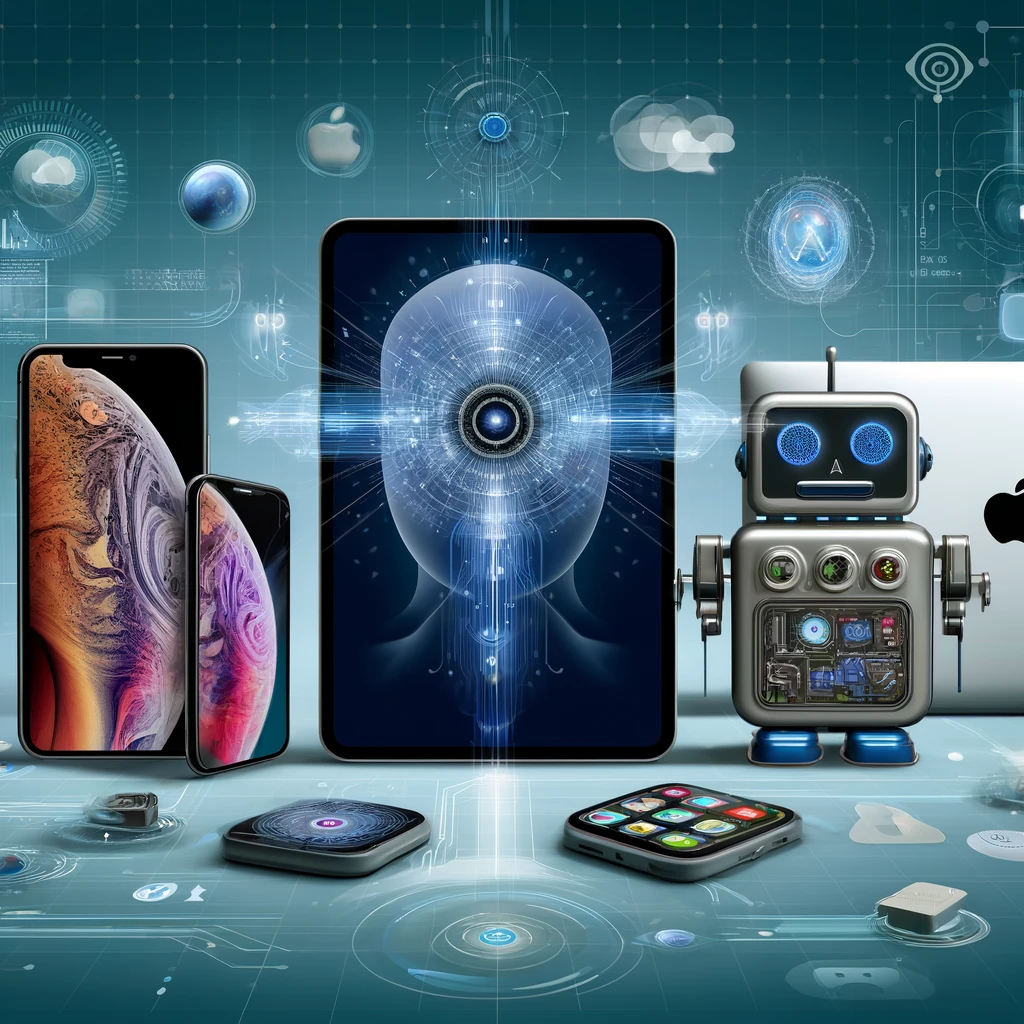Apple Intelligence: Revolutionizing Personal Technology with Privacy and Power

Illustration of Apple Intelligence seamlessly integrating into Apple devices, enhancing user experience with advanced AI capabilities.
- What is Apple Intelligence, and how does it enhance Apple devices?
- How does Apple Intelligence protect user privacy while providing advanced AI functionalities?
- What are some of the new features and capabilities introduced with Apple Intelligence?
At Apple’s Worldwide Developers Conference (WWDC) 2024, a groundbreaking announcement was made that promises to transform the way we interact with our personal devices. Dubbed Apple Intelligence, this new feature integrates advanced artificial intelligence (AI) and machine learning (ML) capabilities into iOS 18, iPadOS 18, and macOS Sequoia. This announcement, which you can watch on YouTube from 1:04:30, marks a significant leap forward in personal computing, emphasizing privacy, integration, and intuitive user experiences. For more details, visit the official Apple Intelligence page.
The Vision Behind Apple Intelligence
Tim Cook, Apple’s CEO, introduced Apple Intelligence by highlighting Apple’s long-standing commitment to creating products that enrich lives by simplifying complex tasks. The advent of generative AI and large language models (LLMs) presents an opportunity to elevate this commitment. However, Apple aims to ensure that these new capabilities align with its core principles: power, intuitiveness, deep integration, personal relevance, and, above all, privacy.
Craig Federighi, Apple’s Senior Vice President of Software Engineering, further elaborated on this vision. He explained that while existing AI tools offer impressive capabilities, they lack a deep understanding of individual users’ needs. Apple Intelligence addresses this gap by embedding powerful generative models at the core of Apple devices, drawing on personal context to provide relevant and helpful intelligence.
Capabilities of Apple Intelligence
Apple Intelligence boasts a range of capabilities designed to enhance user experiences across text, images, and actions. Here’s a closer look at some of its standout features:
- Advanced Natural Language Understanding: Apple Intelligence leverages large language models to improve natural language understanding, making everyday tasks faster and easier. For instance, it can prioritize notifications to minimize distractions, rewrite and proofread text, and summarize content across apps like Mail, Notes, Safari, Pages, and Keynote.
- Image Generation and Customization: Users can create original images to enhance conversations and presentations. Apple Intelligence understands personal photo libraries, allowing users to generate personalized images. Whether wishing a friend a happy birthday with a festive image or creating a superhero image for a family member, the system offers creative possibilities in styles like Sketch, Illustration, and Animation.
- Contextual Actions Across Apps: Apple Intelligence can orchestrate tasks across various apps, enhancing productivity. It can pull up files shared in recent emails, display photos of specific individuals, or play recommended podcasts. This seamless integration saves time and effort by automating routine tasks.
Personal Context and Privacy
One of the most significant innovations of Apple Intelligence is its ability to understand and act on personal context. This means the system can analyze and retrieve relevant data from across apps to assist users effectively. For example, it can process meeting details, personal schedules, and traffic predictions to help users plan their day better.
Privacy, a cornerstone of Apple’s philosophy, is deeply embedded in Apple Intelligence. The system processes data on-device whenever possible, minimizing data exposure. When cloud processing is necessary, Apple’s Private Cloud Compute ensures data privacy. These servers, built with Apple silicon, adhere to the same stringent privacy standards as Apple devices, ensuring data is used solely to fulfill user requests without being stored or accessible to Apple.
Transforming Siri with Apple Intelligence
Apple Intelligence also brings a major update to Siri, making it more natural, contextually relevant, and personal. Siri now has a new design, integrating seamlessly into the system with a glowing light around the screen edge. Its improved natural language understanding allows for smoother interactions, even when users stumble over their words. Siri maintains conversational context, enabling follow-up commands without repetitive information.
For instance, users can now type to Siri when speaking isn’t convenient, switch between text and voice, and receive detailed product knowledge. Siri can also take action based on on-screen content, such as adding a new address from a text message to a contact card or enhancing photos based on user commands.
Writing Tools and Image Creation
Apple Intelligence introduces powerful writing tools that enhance communication across various applications. These tools can rewrite, proofread, and summarize text, making it easier for users to craft well-written emails, articles, or blog posts. The system can also generate different text versions, allowing users to choose the one that best fits their needs.
In addition to text capabilities, Apple Intelligence offers a new feature called Genmoji, which lets users create customized emojis based on their descriptions. This feature is integrated directly into the keyboard, making it easy to generate unique emojis that perfectly capture the moment.
The Image Playground experience further expands visual expression by allowing users to create playful images in seconds. Users can choose from themes, costumes, and accessories, or type descriptions to generate specific images. This feature is available across multiple apps, including Messages, Keynote, Pages, and Freeform, as well as in a dedicated Image Playground app.
Enhancing Photos and Memory Creation
Apple Intelligence also enhances the Photos app with new editing and search capabilities. The Clean Up tool can remove distracting objects from the background of photos without affecting the main subject. Natural language search makes finding specific photos and videos more convenient, and the ability to search within videos helps users locate particular moments quickly.
Creating Memory Movies is now simpler than ever. Users can type a description of the memory they want to create, and Apple Intelligence will select the best photos and videos, craft a storyline, and set it to music from Apple Music. This feature makes it easy to relive and share precious moments.
Integration with External AI Tools
Recognizing the value of external AI tools, Apple has integrated support for ChatGPT from OpenAI, powered by GPT-4o. Siri can now tap into ChatGPT’s expertise for tasks that require broad world knowledge or specialized domain expertise. Users can ask Siri to retrieve menu ideas, decorate spaces, or generate bedtime stories, all seamlessly integrated into the Apple experience. Additionally, developers can incorporate these AI capabilities into their apps using updated SDKs and new APIs.
Looking Ahead
Apple Intelligence represents a significant step forward in personal computing, combining advanced AI capabilities with Apple’s commitment to privacy and seamless user experiences. By integrating powerful generative models, understanding personal context, and protecting user data, Apple Intelligence promises to make everyday tasks faster, easier, and more intuitive. As it rolls out with iOS 18, iPadOS 18, and macOS Sequoia, Apple Intelligence is set to redefine what users can expect from their personal devices, ushering in a new era of personal intelligence that is both powerful and private.
For a deeper look into Apple Intelligence, watch the WWDC24 video and visit the Apple Intelligence page.




